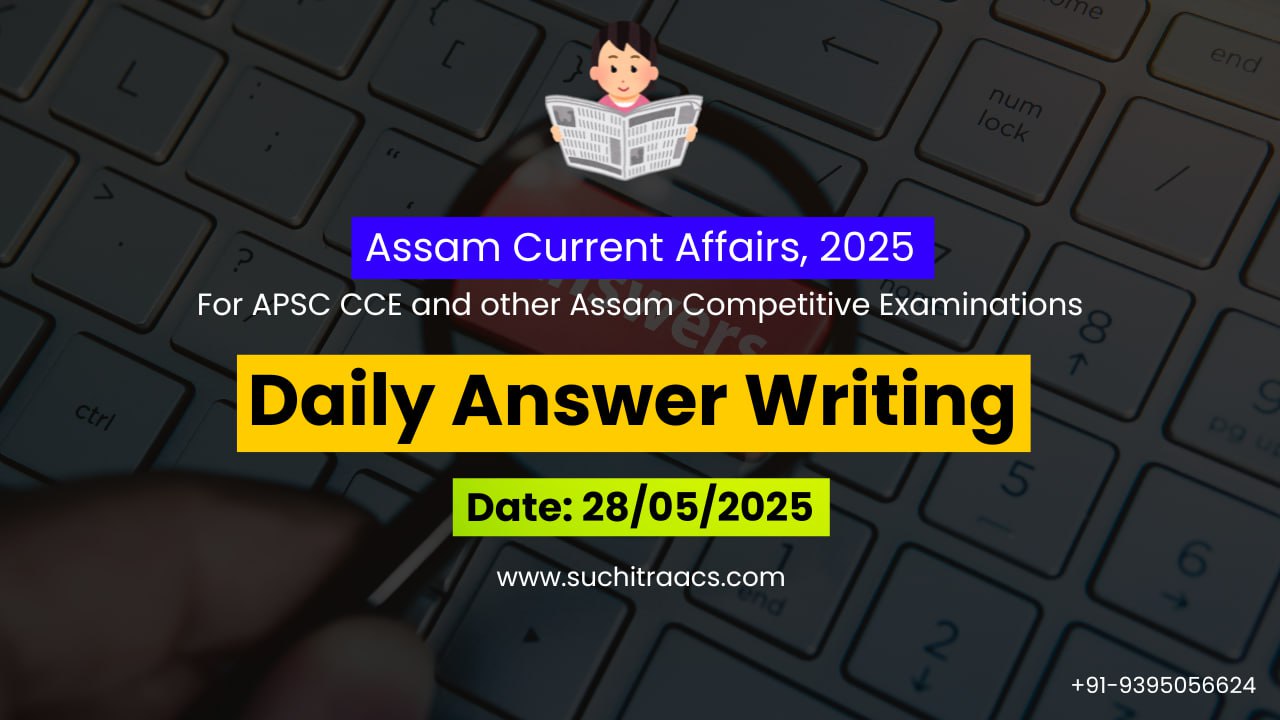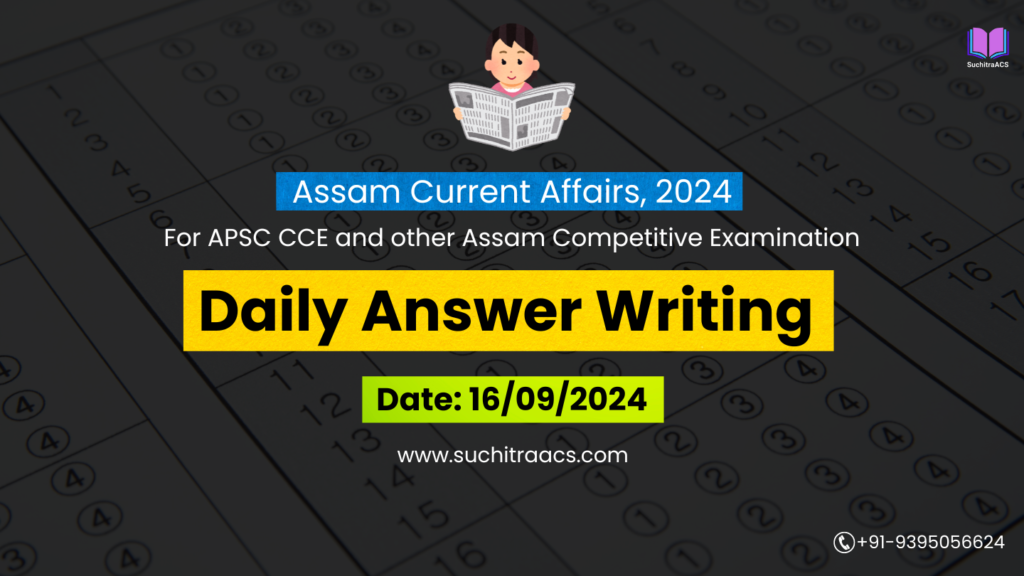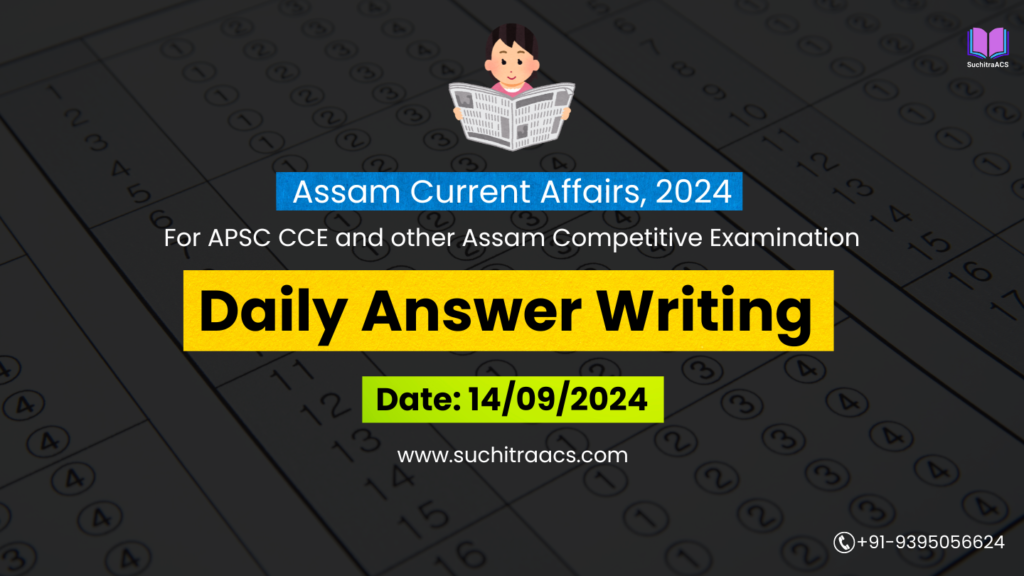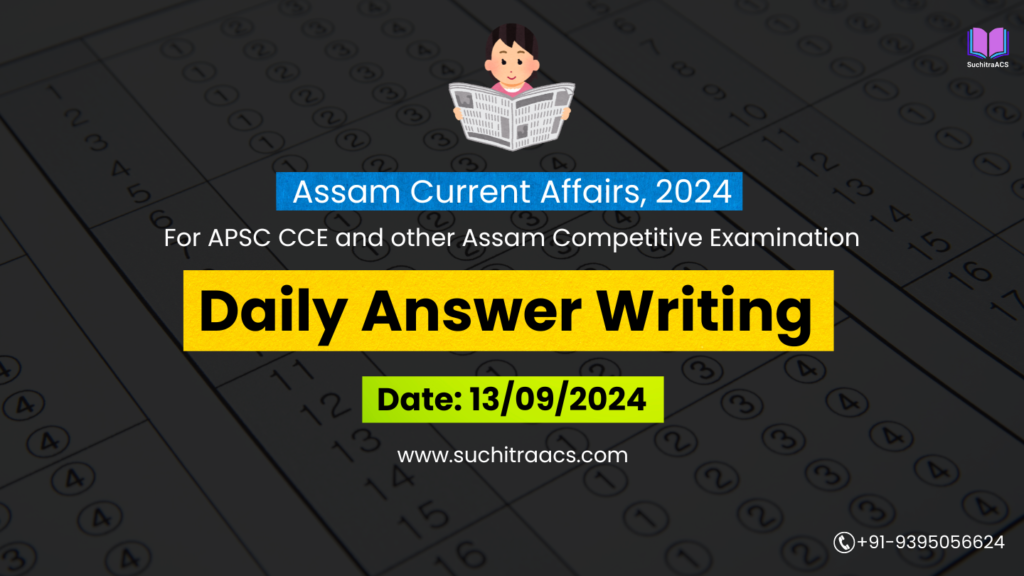APSC Answer Writing (Daily) based on Assam Tribune – 28/05/2025
For APSC CCE and other Assam Competitive examinations aspirants, practicing Daily Answer Writing is vital. This blog covers the most important Main question and its model Answer from the Assam Tribune today (28-05-2025).
📝 Mains Question
Q. “Eradicating child marriage is not only a legal goal but a social necessity.” Discuss how Assam’s anti-child marriage campaign demonstrates a governance model for social reform. Also examine the challenges and suggest strategies for national replication.
✅ Model Answer
🔹 Introduction:
Child marriage in India has long been a barrier to gender equality, education, and public health. According to NFHS-5, nearly one in four women aged 20–24 were married before 18. In this context, Assam’s aggressive crackdown on child marriage, achieving an 81% reduction in targeted districts, has emerged as a model of law-backed, data-driven, and community-engaged governance.
🔹 Assam’s Governance Model: Key Features
| Component | Description |
| Strong Legal Enforcement | Thousands of arrests under the Prohibition of Child Marriage Act, 2006 and POCSO for underage sexual offences. |
| Data-driven Action | District-wise mapping of vulnerable zones and real-time tracking of cases. |
| Political Will | CM Himanta Biswa Sarma personally monitors the campaign; strong top-down backing. |
| Multi-stakeholder Coordination | Involvement of police, school authorities, panchayats, and social welfare officers. |
| Preventive Measures | Awareness campaigns in religious institutions and integration with school curriculum. |
🔹 Significance of Assam’s Model
- National Recognition: Appreciated by the Prime Minister as an NDA best practice.
- Societal Change Catalyst: Aims to eliminate the practice entirely by 2026.
- Human Development Impact: Reduces maternal mortality, improves school retention among girls.
- Replicable Blueprint: Combines legal deterrence with community engagement.
🔹 Challenges in Replication
| Challenge | Explanation |
| Cultural Entrenchment | Child marriage is normalized in many communities due to poverty, patriarchy, and illiteracy. |
| Birth Record Manipulation | Lack of proper documentation makes age verification difficult. |
| Legal Pushback | Accused often secure bail; families resist intervention. |
| Victim Vulnerability | Rescued girls face social stigma and economic instability. |
🔹 Suggested National Strategies
- Strengthen Civil Registration: Universal birth and marriage registration using Aadhaar linkage.
- Incentivize Delay in Marriage: Cash transfers, scholarships, and career counseling.
- Build Support Systems: Hostels, education continuity, and skill development for rescued girls.
- Fast-Track Courts: Special child marriage courts to ensure speedy justice.
- Community Watchdogs: Training ASHAs, Anganwadi workers, and school teachers as first responders.
🔚 Conclusion:
Assam’s campaign against child marriage demonstrates that firm governance, when paired with community engagement and legal vigilance, can disrupt deeply rooted social evils. To eradicate child marriage nationally, India must blend law, incentives, and inclusion, following Assam’s lead as both an example and a warning.
✨ Looking for top-quality APSC Mains Guidance with Personalised Mentor?

🔔 Join Our WhatsApp Study Group!
For exclusive access to premium quality content, including study materials, current affairs, MCQs, and model answers for APSC CCE and other Assam competitive exams.
Click here to join: SuchitraACS Study WhatsApp Group
📚 Want to know more about SuchitraACS’s most affordable courses?
Click here to know more: SuchitraACS Courses for APSC CCE and Assam Competitive Examinations




